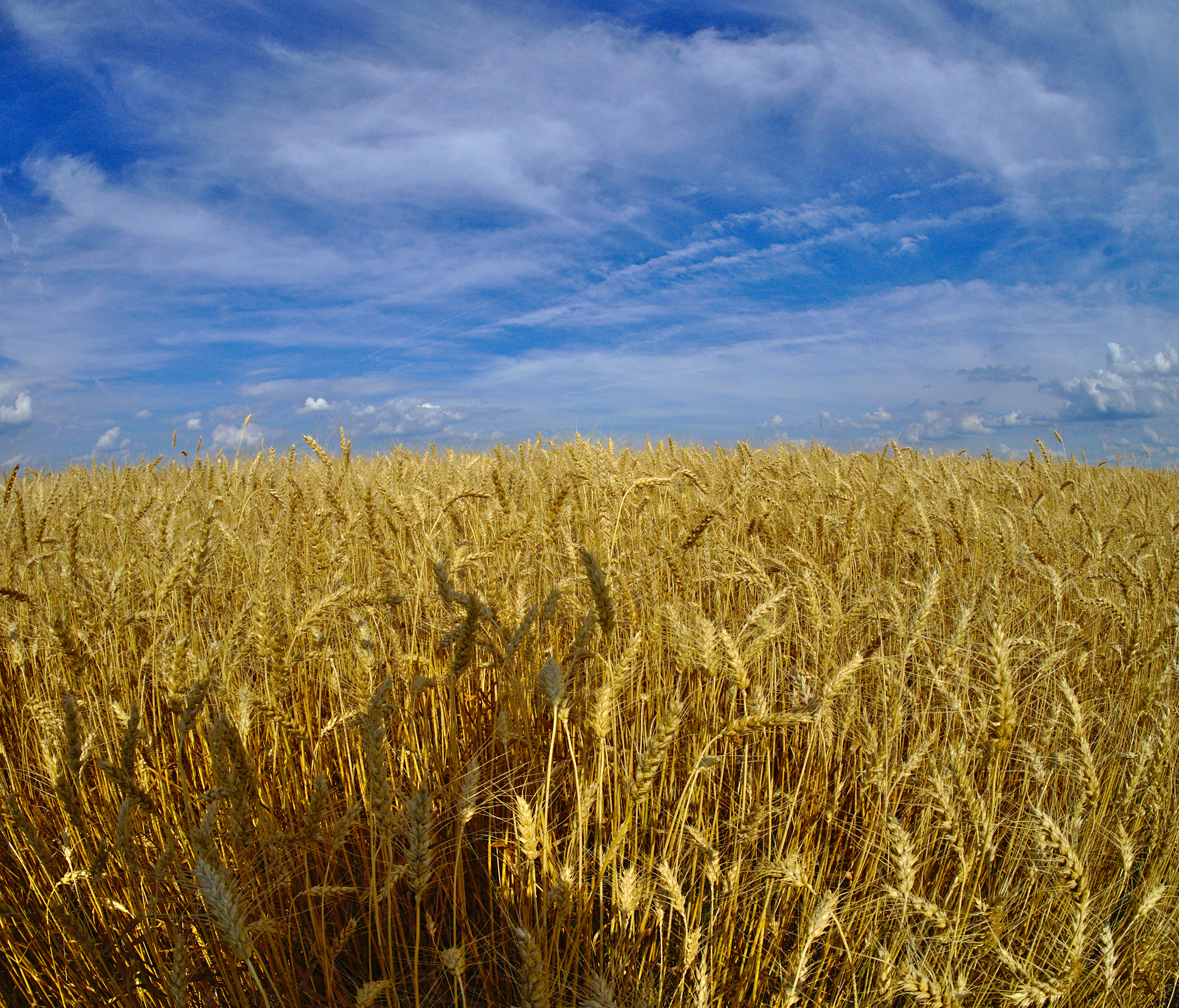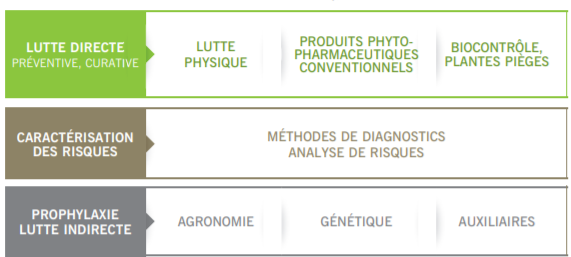Integrated crop protection for field crops
 Preventing diseases and pests, rationalising pesticide use, avoiding resistance, etc.
Preventing diseases and pests, rationalising pesticide use, avoiding resistance, etc.

The aim of Integrated Crop Protection (ICP) is to reduce the use of pesticides in order to minimise the environmental impact and the cost of control, while maximising the farmer's economic return.
It consists of " careful consideration of all available plant protection methods and, consequently, the integration of appropriate measures that discourage the development of populations of harmful organisms and keep the use of plant protection products and other types of intervention to levels that are economically and environmentally justified, and reduce or minimise risks to human health and the environment " (paragraph 6 of Article 3 of Directive 2009/128/EC).
Principles
- Prevent the appearance of diseases and pests.
- Monitor the appearance of harmful organisms.
- Use threshold values as a decision rule.
- Favour the use of non-chemical control methods.
- Choose selective pesticides and minimise undesirable effects on health and the environment.
- Rationalise the use of pesticides to reduce their impact.
- Implement a strategy to prevent the emergence of resistance.
- Monitor and evaluate the strategies put in place to assess "success".

Disease management levers
- Varietal choice : Choose varieties that are not very susceptible to the diseases that are causing problems in a plot.
- Late sowing : Late sowing reduces health risks.
- Fertilisation : Moderating yield targets when managing fertilisation limits risks.
- Ploughing : Ploughing between harvesting maize and sowing wheat reduces the risk of fusariosis, for example.
- Mixing crops : Mixing crops reduces the development of disease and increases competition with weeds.
- Use biostimulants : These are preparations whose action is to improve the overall performance of plants : use of resources, growth, productivity, resistance to stress, etc. The mechanisms involved are multiple and complex (solubilisation of minerals in the soil, production of growth factors, etc.).
- Fungicides : In low-risk situations, the number of treatments and doses can be reduced thanks to preventive measures.
Combining several of these options will help to improve the health of the crop.
To see other levers, consult this page.
Pest management levers
- Varietal selection : Choose varieties that are tolerant to the pests posing a problem in the plot.
- Late sowing : Late sowing reduces the risk of pests.
- Varietal mix : This measure is insufficient to avoid treatments in a year of high pest pressure.
- Exporting straw : Exporting straw from the previous crop helps to limit slug pressure on sensitive crops such as oilseed rape.
- Deep tillage : Deep tillage disrupts the slug cycle and destroys the eggs.
- Trichogramma : Biological control of the European corn borer is highly effective.
- Trap plants : Combine the sales crop with another crop that is more palatable to the pests causing problems in the plot.
- Insecticides : Only if there is a heavy infestation.
To see other levers, consult this page.
Weed management tools
- Rotation : Diversify sowing periods to reduce the frequency of weed generations.
- Intermediate cover crops : Covering the soil will prevent weeds from developing.
- Ploughing : Ploughing only once between two winter crops to bury the seeds helps to avoid problems with winter grasses, which are not very persistent.
- Late sowing : Late sowing of cereals helps to avoid Vulpine emergence, but does not help to avoid curd, which emerges later in the winter.
- False seeding : Shallow tillage stimulates germination and destroys emerged seedlings. Deep tillage at sowing cancels out the effects of false seeding. Avoid combined sowing !
- Density : High density increases competition from weeds.
- Mechanical weeding : Weeder in cereals, weeder or rotary hoe followed by hoeing in rape and maize. Pre-emergence harrowing, when it can be applied, can be very effective.
- Herbicides : Late treatments on observations, but the treatment is sometimes not very effective on developed plants.
To read a report on this subject, click here.
To see other levers, consult this page.